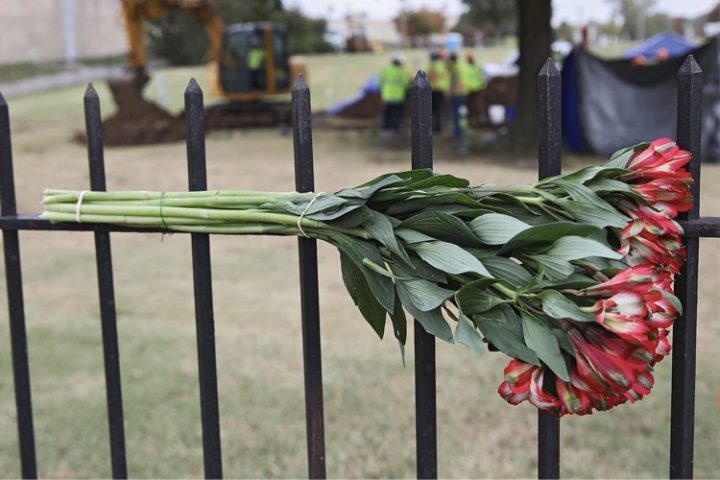
Today marks the 100th anniversary of the violent confrontation between a white mob and a black mob that led to the tragic destruction of the relatively prosperous Greenwood district of Tulsa, Oklahoma. Not only did the Tulsa Race Riot (also known as the Tulsa Race War or Tulsa Race Massacre) lead to a tragic death toll of an untold number of blacks and whites, it essentially destroyed the “black section” of the city known as Greenwood.
Unfortunately, the commemoration of the event has been marred by political controversy, and there have been several attempts to use the incident for political advantage. For example, the supposedly non-political Tulsa Race Massacre Commission, established several years ago by the Oklahoma Legislature to investigate what happened over a two-day period of May 31 and June 1, 1921, has been used to attack two Republican officeholders in the state — U.S. Senator James Lankford and Governor Kevin Stitt.
There has even been controversy over whether the event has been adequately covered in the history books. National Geographic History even claimed in a recent article, “Reports of the Tulsa massacre were intentionally omitted from American history until its hundredth anniversary neared.”
This is false. As I demonstrated in an article last week, Oklahoma History textbooks dating back to the 1950s (that is far back as I have access to such books) covered the event. American History textbooks also have mentioned the episode, although understandably not in as much detail as found in an Oklahoma History book.
Even an event to commemorate the event, scheduled for today, featuring Democratic Party politician Stacey Abrams and singer John Legend, was canceled, reportedly in a dispute over how much money would go to victims of the 1921 violence in the 35-block Greenwood district. Viola Fletcher, 107, recently testified before Congress, demanding reparations for the destruction.
“I am 107 years old and have never seen justice,” Fletcher told Congress. “I still see black men being shot, black bodies lining the street. I still smell smoke and see fire. I still see black businesses being burned. I still hear airplanes flying overhead. I hear the screams.”
No doubt it was a traumatic event for a seven-year-old girl, but why taxpayers should compensate someone for which they had nothing to do with, that happened a century ago, is a dangerous idea that has led to much tragedy in the past. Jews living in the Middle Ages were often held responsible for the crucifixion of Christ, but they had no more to do with Jesus’ death than any other person living then or now. From a standpoint of Christian theology, one might argue that all persons living bear responsibility for the death of Jesus on the cross, but no special responsibility should go to a Jewish person today. Likewise, just because a person is white does not mean that person has any more responsibility for the massacre in Greenwood than anyone else. We can safely say that no one is living today had anything whatsoever to do with those events — any white person still living today would be about the same age as Fletcher, and seven-year-old kids are not capable of the destruction seen in Greenwood.
Some members of the Tulsa City Council are even pushing a resolution to offer an apology for what happened 100 years ago. This is silly, as they would be apologizing for something that happened before they were born to people who have already died.
President Joe Biden is still slated to speak in Tulsa on Tuesday. It is predictable that Biden will use the event to stoke racial tensions, because the Democratic Party has decided to blame all racial injustice — real and imagined — on the Republican Party. This is ironic, because it is certain that almost all the perpetrators of the Greenwood violence were Democrats. (I should add that I don’t blame today’s Democrats for what other Democrats did a century ago. However, today’s Democrats should apologize for their leftist ideology, since that ideology, if implemented, will result in the enslavement of all — both blacks and whites.)
Over the weekend, hundreds of black gun owners conducted a Second Amendment march through downtown Tulsa, in their own commemoration of the event. Over a dozen gun clubs joined with the Black Panther Party in the march, chanting “Black Power,” and “Black Lives Matter.” No violence was reported.
What caused the 1921 Tulsa Race Riot?
Much of the event is shrouded in mystery, and what we do know has been liberally mixed with speculation and unlikely scenarios. The spark that touched off the violence was when Dick Rowland, a 19-year-old black man, entered the Drexel building in Tulsa, reportedly looking for a restroom. He entered the elevator, operated by Sarah Page, a white teen-age girl. (In 1921, elevators were manually operated.) There has been speculation that the two knew each other, but for some reason, Page screamed. It has been suggested that Rowland stumbled and stepped on her foot, but again, that is not even confirmed.
Rowland was later arrested and charged with sexual assault, but after Page told police that Rowland had done nothing wrong, police were about to release him. Unfortunately, the Tulsa Tribune newspaper printed an inflammatory article on its front page, speaking of “scratches” on Page and her “torn clothing.” The Tulsa Tribune went out of business years ago.
This led to a white mob that descended upon the jail, with apparent intentions of lynching young Rowland, where it was confronted by a black mob, with apparent intentions of stopping any such lynching. Many of the men on both sides were armed and were veterans of the recent First World War, and knew how to fight. Violence broke out, and although the black mob inflicted casualties on the white mob, the white mob eventually got the upper hand, and drove the blacks back into Greenwood.
The Greenwood district was destroyed in the ensuing violence, as fires were set throughout the district. Some blacks fled to white areas, and several Tulsa white churches gave sanctuary to them. Exactly how many Tulsans, white and black, died in the Tulsa Race War is uncertain.
Myths have circulated that the planes flying overhead were dropping explosives on Greenwood, but this is highly unlikely. (This was 1921). One man tried to tell me one time that President Warren Harding called out the National Guard, but that is false — Governor James Robertson did that. Order was restored by the next day, but the Greenwood district lay in ruins.
Charges have been made that the city government of Tulsa at the time was behind the destruction, but it is more likely that the entire ugly event illustrates what happens when mobs mete out their warped concept of justice, rather than letting due process take its course. That is a lesson that we should take away from the 1921 Tulsa Race Riot.
Steve Byas is a university professor of history and government, and the author of History’s Greatest Libels. He may be contacted at [email protected].



